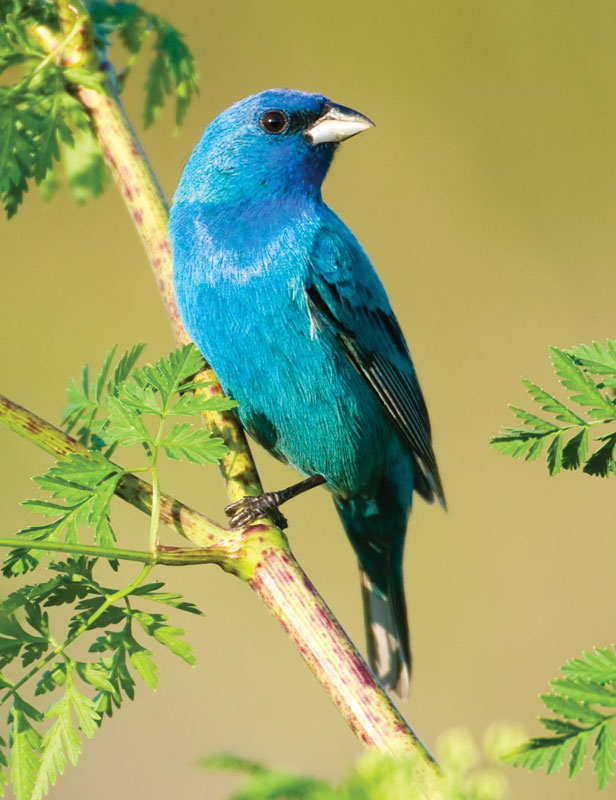Passerina cyanea
It is easy to take the warmth of summer when you’re decked out is such cool shades of blue! The Indigo Bunting is a bird of the summertime in eastern North America. This species that winters from southern Florida to northern South America arrives in the northeast in late May and early June. Indigo Buntings are consummate singers. Males seem to express their appreciation of our climate by singing from a tree branch for much of the time they are with us, often continuing their serenade well into the hottest part of the day. Interestingly, there are slight variations to the basic song that are regionally based and shared by males in a given “neighborhood.”
Goldfinches forage for food during the daytime, usually in the company of other species. During winter months these roaming flocks can include large numbers of individuals, and in some cases include other species like chickadees and sparrows. Flocks seem to move in rolling, “leap-frog” manner that is beautiful to watch as they traverse open fields. If it seems like you have American Goldfinches at your feeders for much of the day, it is likely they are not the same birds all day, but individuals from a number of foraging flocks for which your feeder is a daily stop. Wintering goldfinches roam over large distances in search of food. Birds living in the north of their range migrate south. Mid-range and southern ones are year-long residents.
While Indigo Buntings are migrating from their winter grounds to the northeast, they feed on the seeds of native grasses. As they arrive, they continue to consume seeds, often finding backyard seed tubes filled with nyjer and finch mixes. Once the temperatures have warmed sufficiently for an ample supply of insects to be present, they typically disappear from our feeders. Besides spiders, caterpillars, and larvae, summer foods include tree buds, young leaves, and various berries. Another favorite Indigo Bunting food may also be present in your lawn: dandelion seeds!
Rather than leaving your dandelions to go to seed, a better strategy for attracting Indigo Buntings, is to fill a nyjer tube feeder with Aspen Song® Finch Mix. This premium blend of fine-textured seeds should be a staple in your spring and summer bird feeding program.
Backyard hobbyists have a once a year opportunity to host Indigo Buntings. While the viewing is brief, it is certainly spectacular!
Reference
Payne, Robert B. 2006. Indigo Bunting (Passerina cyanea), The Birds of North America Online (A. Poole, Ed.). Ithaca: Cornell Lab of Ornithology
